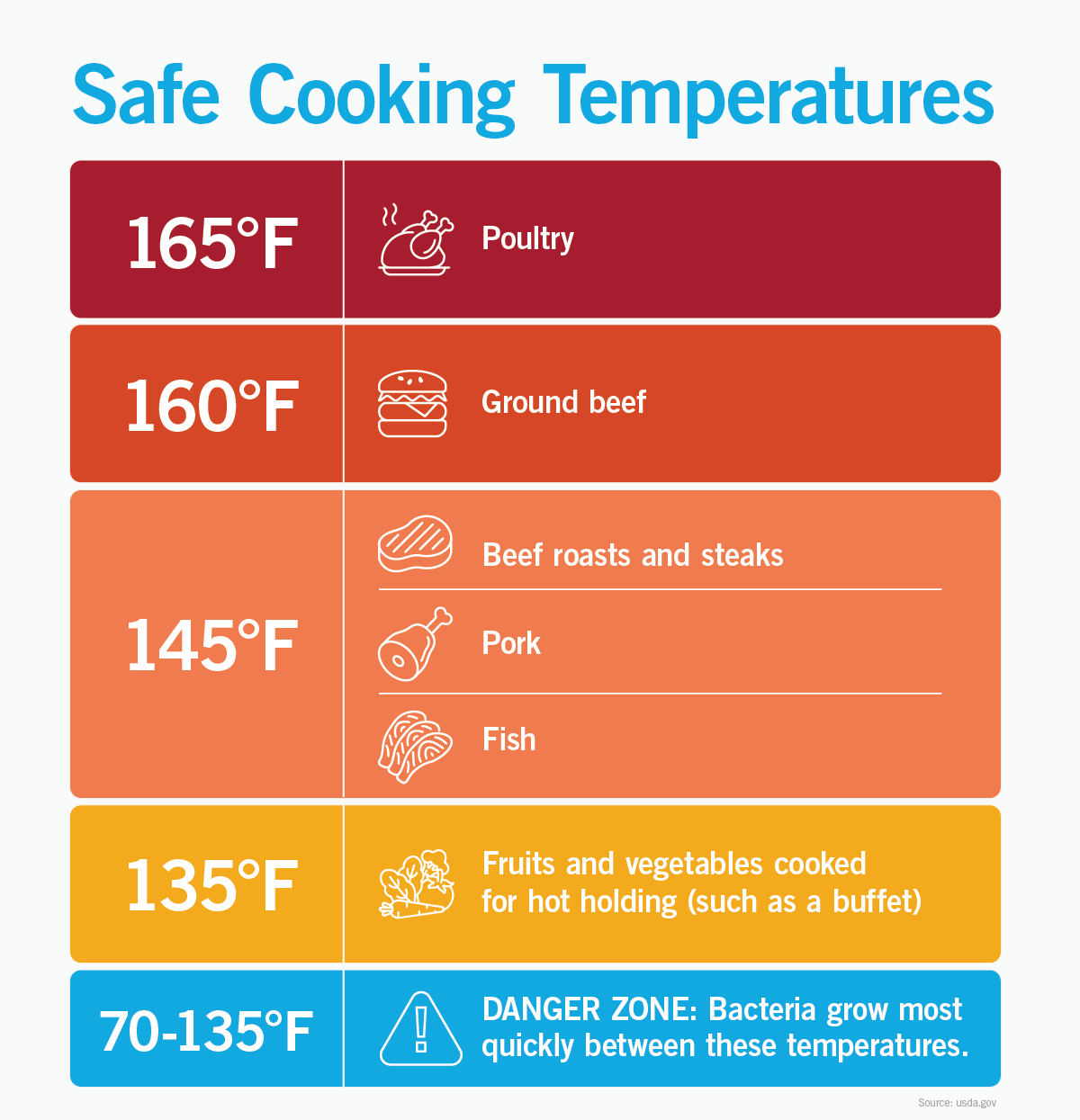A string of recent listeria and E. coli outbreaks have put a spotlight on the importance of food safety. Contamination can put vulnerable populations at risk of death or serious illness.
What is E. coli and Listeria?
E. coli (Escherichia coli) and Listeria (Listeria monocytogenes) are two of the most common bacteria resulting in foodborne illnesses. They are usually spread through contaminated foods but can also be spread through unpasteurized beverages, fecal matter and touching contaminated surfaces.
Listeria is an especially resilient bacteria that can survive in cold temperatures, even found in air conditioning units. Recent listeria recalls have been announced for foods that include frozen waffles, food kits with chicken, soft ripened cheeses and deli meats. Contaminated onions were recently linked to an E. coli outbreak in fast-food burgers.
Listeria symptoms & E. coli symptoms
Common listeria and E. coli symptoms include:
For most people, symptoms should be resolved within a few days. Supportive therapy, which would include plenty of hydrating fluids and a bland diet can help. However, elderly patients, those with underlying health conditions, young children and pregnant people are at risk of more severe illness.
Bloody diarrhea, dehydration and change in mental status are warning signs that would warrant emergency care.
“With respect to listeria, it’s the neurological symptoms that become concerning. That would include headaches, confusion, worst case scenario meningitis or encephalitis,” said Northeast Medical Group primary care doctor Piyal Alam, DO.
In certain cases, patients sick with E. coli can develop sepsis, a condition when bacteria spreads from the initial source into the bloodstream.
“Once it’s in the bloodstream it becomes systemic and then it could start affecting multiple organs causing organ failure. We don’t want toxins to go into our bloodstream, so catching it early is very important,” said Dr. Alam.
How do you prepare food safely?
Proper food preparation at home can help prevent the spread of bacteria. This includes:
- Wash hands effectively. Always wash hands with soap and warm water before and after working with raw meats and before preparing any type of food.
- Do not wash raw meat, which can result in the spread of germs.
- Cook meat properly to eliminate pathogens. Chicken should be cooked to 165 degrees Fahrenheit while beef (roasts & steaks), pork and seafood should be cooked to at least 145 degrees. Ground beef needs to be cooked to 160 degrees. Use a meat thermometer to be sure.
- Wash fruits and vegetables before eating them by running them under cold water.
- Wash surfaces and hands again when you’re done cooking.
Unfortunately, some of the recalls have been linked to food that is already cooked or prepared. That’s why it’s important to stay on top of food recalls from trusted sources like the CDC, USDA and FDA.
“One of the biggest misconceptions is that symptoms will happen right away,” said Dr. Alam. “Sometimes symptoms could show up days if not weeks to months later. If there was an outbreak, be mindful and think about whether you were exposed at any point. If you develop symptoms that could be linked to an outbreak, stay well hydrated and then following up with a healthcare professional is very important.”





